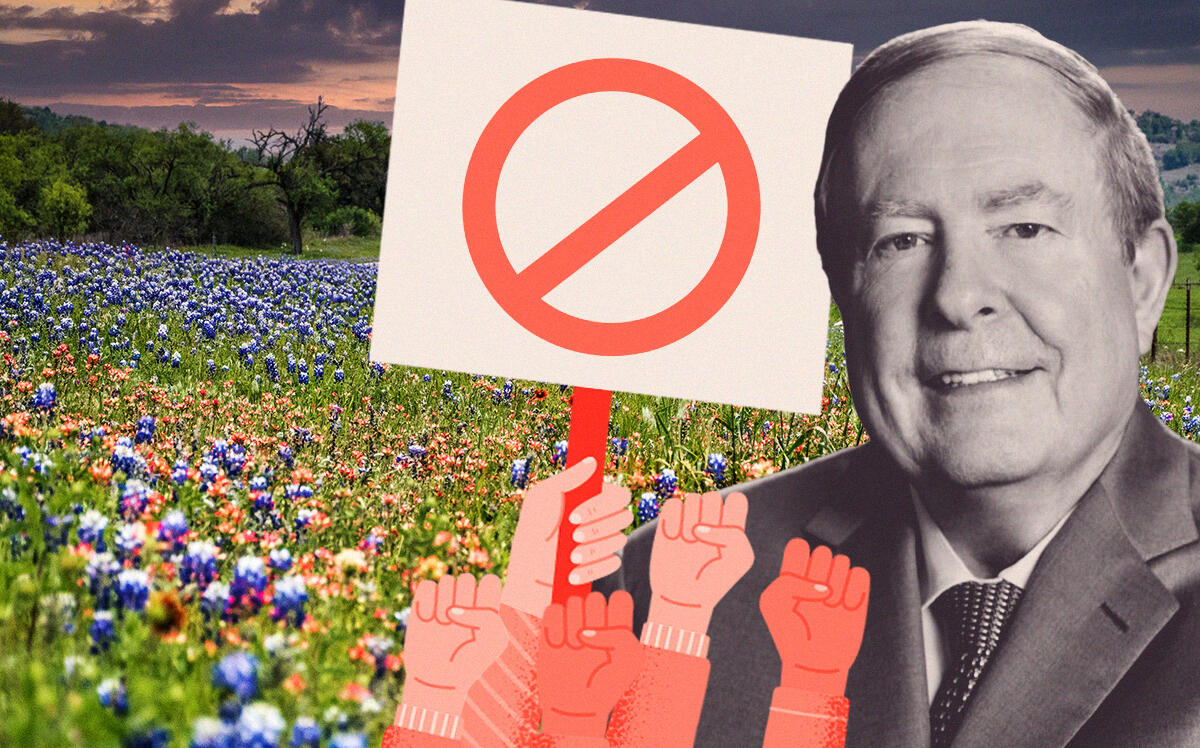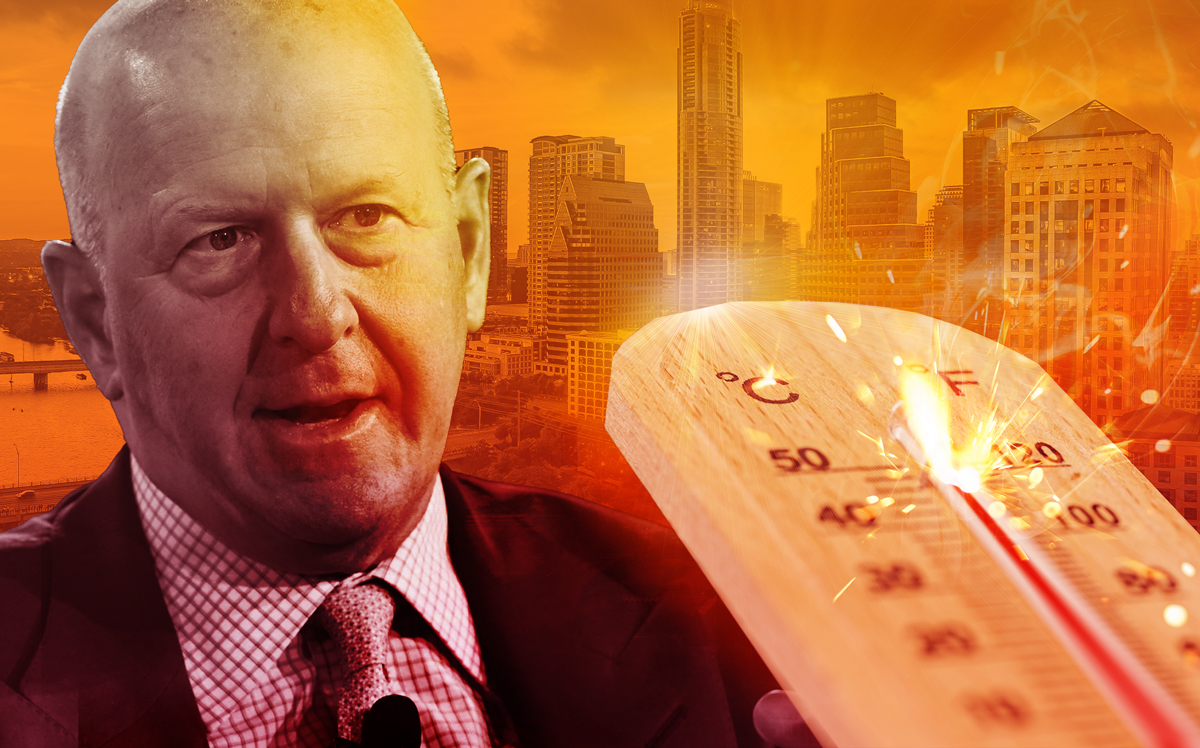Steve Winn faces ecological fight in Texas Hill Country
Development could be breaking point for Hill Country’s fight against sprawl

Steve Winn has a new challenger — a tiny salamander in the Texas Hill Country.
The Texas billionaire and founder of RealPage has been in a standoff with neighbors and environmental groups over his planned Marisol Springs development. The mixed-use project spans 1,400 acres across unincorporated parts of Travis and Hays counties.
“If we preserve the spring flows and the river to save the listed threatened creatures, we are saving ourselves in the process,” said Bill Bunch, the executive director of the Save Our Springs Alliance, a nonprofit focused on water resources.
“If we are going to pump our rivers or springs dry and extinguish these species, then we are going to follow soon thereafter.”
Winn has taken steps to make the development conscientious. For instance, sewage will be processed on site to be used in irrigation, and buildings will have cisterns to catch rainwater. Fertilizers or pesticides will also be banned, according to Bloomberg.
On the other hand, Winn’s representatives have kept tight-lipped about the project’s total cost, the average size of the homes that are planned and their price points. It is confirmed that there will be 40 homes, along with a 71-room hotel, 30 resort residences and a party barn for corporate events and weddings.
This is no ordinary NIMBY clash. The issue is about more than keeping development and traffic away from the scenic countryside. These opposing groups have gone so far as to lobby the federal government to declare a local species of salamander as endangered in the hopes it will throw a wrench into Winn’s construction plans, near where Roy Creek flows into the Pedernales River about 35 miles west of downtown Austin.
Winn’s most vocal opponent is 77-year-old retiree and former film producer Lew Adams. He, his relatives and another family, the Blacks, own 50 acres of land that would be surrounded on three sizes by Mirasol Springs. Called Roy Creek Canyon, the Adams-Black parcel is a lush oasis with its own cooler microclimate and several pristine swimming holes. Despite Winn’s assurances that the development will only pump groundwater, Adams is worried that unchecked water use at Mirasol Springs will dry up the springs that feed Roy Creek as parts of the Hill Country are currently in “exceptional drought” conditions, the most severe level.
Adams is not just a wealthy Texan trying to protect his rural paradise. Canyon Creek currently serves as a field lab for students at St. Edward’s University in Austin. Over the years, Adams has hosted scientific research groups, University of Texas biology classes and officials from the Texas Parks & Wildlife Department at his property to showcase its biodiversity — including the endangered golden-cheeked warbler and the aforementioned Eurycea salamander whose status is being determined. Advocates like the Save Our Springs Alliance say preserving habitats like Roy Creek Canyon is critical for their survival.
Read more
Adams gave Winn a tour of the canyon after his real-estate development firm, Mirasol Capital, bought the surrounding land in 2018.
“It was in the springtime, it was gorgeous,” Adams said. “We walked down and Steve was standing there, and he was looking around at the trees and everything, and he turned around and said, ‘I feel like I’m in a cathedral.’”
A few years later, in 2021, Winn sold his company RealPage for nearly $10 billion. Adams now feels betrayed by Winn’s plans to develop the land. “You say this is a cathedral to you, and yet you are willing to do something that could totally desecrate it,” he said.
While Winn waits on groundwater permits and the submittal of a site development permit in Travis County, the site sits mostly empty, aside from a dog kennel, a chicken coop and an old farmhouse used by a previous owner, Bloomberg reports. The developers are hoping to complete Mirasol Springs in the first quarter of 2026.
“It may be that the development on its own has minimal impact out there,” said Robert Mace, a professor at Texas State University and executive director at Meadows Center for Water and the Environment. “But once the area starts getting developed, it’s all going to compound and cause more problems.”
The Texas Hill Country is known for its ranches and landscapes with sprawling hills and clear-water streams. It’s also what connects San Antonio to Austin — two of the state’s biggest metros. So, as tech giants like Oracle, Tesla and Samsung have invested billions in the area, residential developers have been eager to expand the suburban sprawl in Hill Country.
Aside from countless hunting and horse breeding ranches, the Hill Country also has a number of wildlife sanctuaries and reserves. In fact, the site of the future Marisol Springs is just down the road from Pedernales Falls State Park and an environmental conservation sanctuary called Westcave.
“This iconic landscape, filled with natural beauty and heritage-rich rural communities, is facing tremendous threats from sprawling growth and development,” the Texas Hill Country Conservation Network said in a 2022 report. “The window of opportunity to keep the Hill Country rural, natural, and vibrant will likely close within our generation.”
— Maddy Sperling







